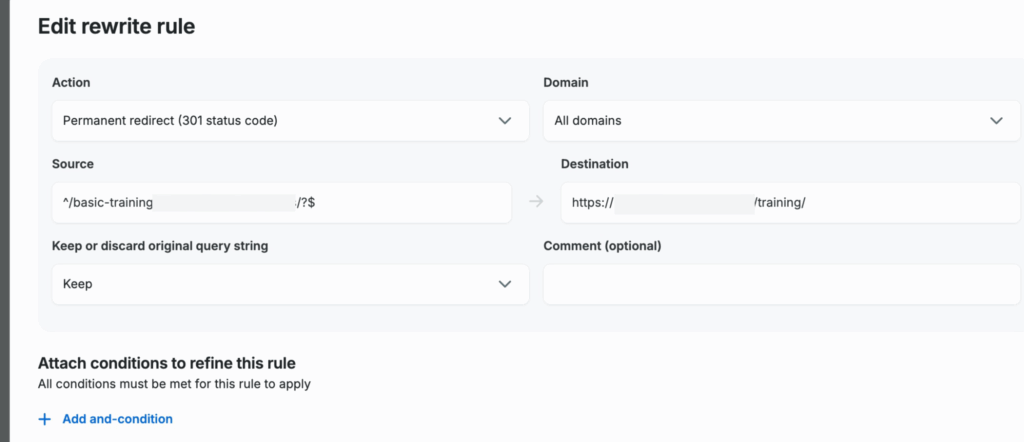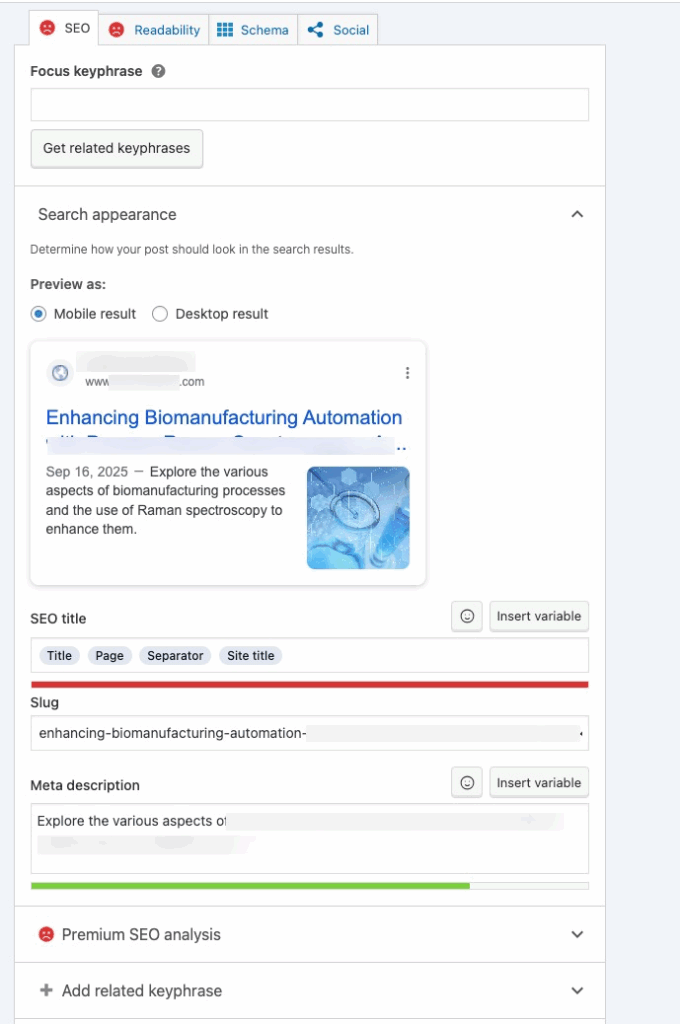Earlier this year, an existing client in a high-growth industry launched a bold new website. It looked pretty good - sleek, modern, everything a “next phase” brand would want.
But within weeks, organic traffic dropped and rankings slid
We weren’t the agency that designed / built the new site, but we were called in to help fix it. What we found is something we see all too often: in the excitement of a redesign, the details that power search visibility and user experience quietly slip through the cracks.
Here’s what went wrong, what we learned, and how you can avoid the same mistakes when your organization tackles its next website rebuild.
What happened with the Rebuild? Common Oversights That Cost Traffic
1. Pages That Quietly Disappeared
Some of the pages driving consistent search traffic were simply missing on the new site. Some were intentionally removed - they didn’t match who the company had become. But those URLs had been ranking, earning backlinks, and bringing in visitors.
Some of this traffic wasn’t what they’d consider their ideal customer, so in one sense the drop was acceptable but it still was an SEO loss.

2. Redirects That Never Happened
When URLs change, search engines and users need a clear map from the old page to the new one. In this case, that mapping didn’t exist. With no redirects in place, visitors hit 404s, and Google quickly dropped those URLs from its index.
This is probably the #1 miss we’ve seen over 15+ years of building websites. Creating redirects is boring! It is exactly the kind of thing that unless a client asks for, a development company is happy to let slide. Many design / dev / marketing agencies are so disconnected from the SEO side they don't even know they are making a huge mistake.
We always do redirects. We usually have to educate a bit about why they are needed but they are too important not to address with a rebuild / re-launch.

3. Beautiful But Heavy Visuals
Large background videos and oversized assets gave the new site a striking look, but they came at a cost - slow load times and weaker performance scores. Google’s PageSpeed performance metrics don’t ignore that, and neither do users on slower connections.
You don’t have to sacrifice beauty for performance, you just have to be more intentional about how you implement it. We were able to adjust some of the technical architecture for these visuals so we could have our cake and eat it too.
4. SEO Metadata Lost in Translation

Titles, meta descriptions, and other on-page SEO details weren’t copied over. These may seem small, but they shape how your pages appear in search results and directly impact click-through rates.
This is especially challenging to bring over if the page titles and content change somewhat. But it is a huge miss if the SEO titles are left generic like “About Us - Acme Company”
5. Heading Structure Chaos
Headings (H1s, H2s, etc.) tell both users and search engines what a page is about. On this site, some pages had no H1s, others used one-word placeholders like “Overview,” and others jumped from H1s straight to H4s. This structure fails technical HTML standards, isn’t helpful for search engines in understanding your content, and is an accessibility issue for those utilizing screen reader technologies. And of course an SEO swing-and-miss.
Note: this is usually flagged by Google PageSpeed tests.

Why were there misses?
Most redesigns start with good intentions: better branding, a more modern feel, improved navigation. But under tight timelines and multiple stakeholders, the less-visible details - redirects, metadata, content mapping - often slip behind the visual priorities. We were right there in the midst, we get it.
We’ve seen this pattern across organizations of all sizes, even those with experienced marketing teams. Design and development can move fast, and unless SEO and content are part of the process from day one, it’s easy to lose critical connective tissue between “old” and “new.”
At the end of the day… someone must care about these details!
How We Helped (and What You Can Do Differently)
We started by performing a full audit of the old and new sites - identifying missing pages, mapping redirects, restoring metadata, and restructuring headings for clarity.
BONUS: Having the previous site available in a holding environment is super helpful! When you launch a new site, don’t immediately destroy access to the old if you can help it!
Recovery takes time, but results are moving in the right direction. Traffic is rebuilding steadily, and the site is performing faster and more consistently across key metrics.
If you’re preparing for a website relaunch, here’s how to protect yourself from the same pitfalls:
- Crawl your current site before development starts - capture all URLs, titles, and metadata. Google Sheets works. We’ve started using Clickup for this.
- Capture redirects as you go and implement them at launch. Bonus: monitor in Google Search Console and Google Analytics post-launch for any 404s to content you might have missed.
- Audit content and page hierarchy to make sure every valuable page has a place.
- Balance aesthetics with performance - beautiful design still needs to load fast. Rarely do good rankings come to sites that load sluggishly.
- Bring SEO and content strategy to the table early, not after the design is approved.
- Google PageSpeed is your friend. Many of these issues can be flagged and dealt with by running PageSpeed or Lighthouse tests prior to a new site launching. https://pagespeed.web.dev/
The Ongoing Recovery
The site’s recovery continues, though it’s now happening in a more complex search landscape - one shaped by AI-driven summaries and evolving ranking factors. That makes every ounce of preserved SEO equity even more valuable.
A redesign can be transformative when done right. But it’s not just a design or dev project - it’s an ecosystem reset.
When design, development, content, and SEO are aligned from the start, you don’t just get a prettier website. You get one that retains (and grows) the traffic and visibility your brand has worked hard to earn.
It is easier and more cost-effective to do it right from the get-go than to have to perform emergency maneuvers on a live site trying to compete.
